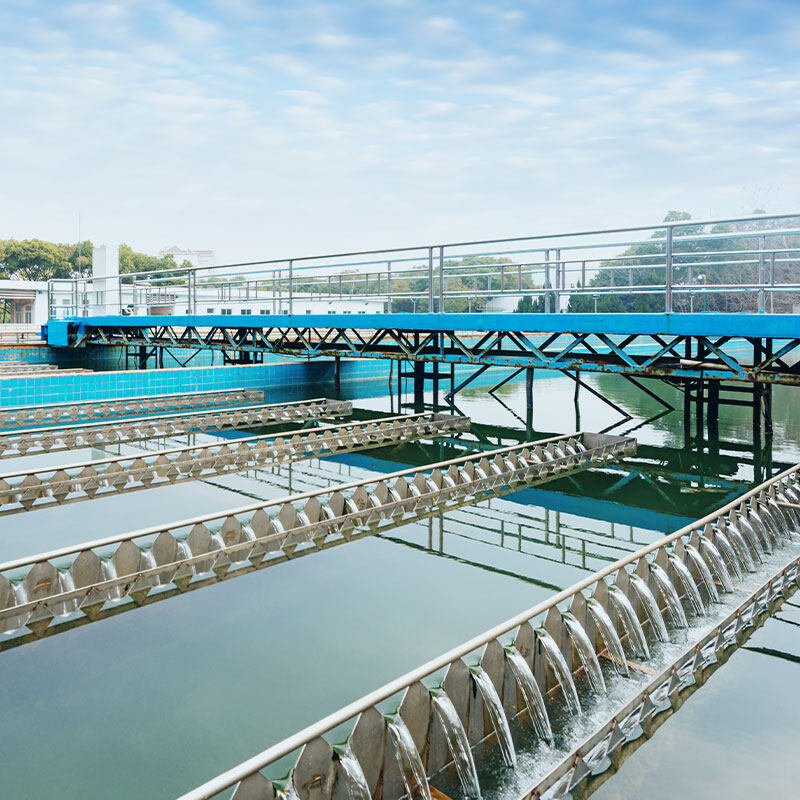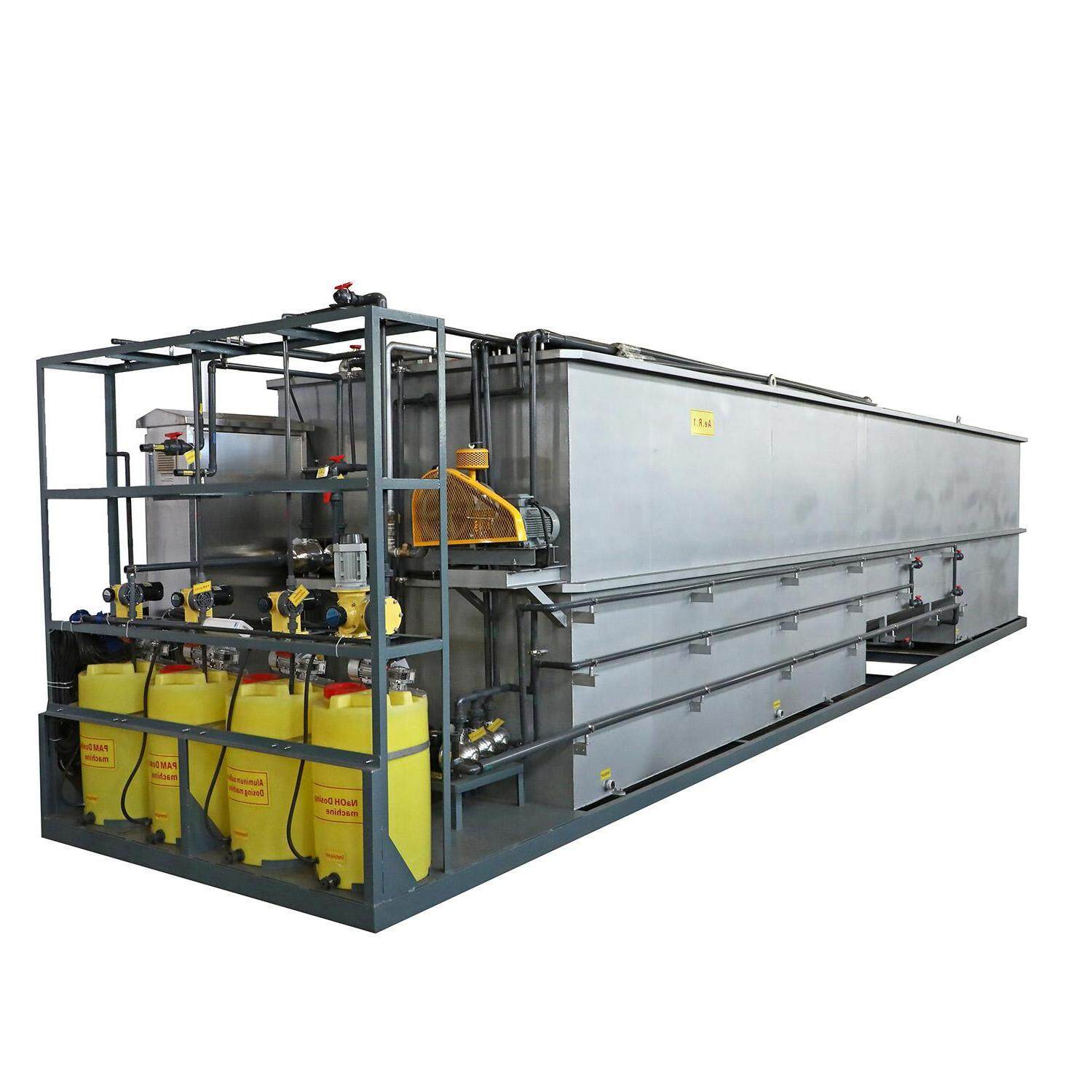Biochemical Process Used in Printing and Dying Wastewater Treatment
Treatment Process
First of all, consider the separation of clear and turbid waste water, and recover or treat some concentrated dyeing waste water and non-biodegradable waste water separately by chemical and physicochemical methods, and then mix other waste water for biological treatment or discharge to the municipal sewage treatment plant for unified treatment.
If the water quality allows, the treatment method of combining chemical coagulation and pressurized air flotation can be used. For small printing and dyeing plants, the existing complete set of equipment can be selected, and the operating cost is slightly higher. In general, the treated water can meet the requirements.
The biological treatment can give priority to the activated sludge method. The traditional air blast aeration method and delayed aeration method can achieve stable results. Under the condition of 4~6 hours of aeration, BOD5 is removed by 90% and COD is removed by 60~70%. The sludge load of blast aeration is 0.3~0.5 kg BOD/kg MLSS • day, and the sludge load of delayed aeration method is 0.1 kg BOD/kg MLS8 • day. If the accelerated surface aeration method is adopted, the aeration tank and sedimentation tank should be built separately, which is conducive to inhibiting sludge expansion, convenient management and stable effluent quality.
When the requirements for treated effluent are high or the wastewater is reused after treatment, adsorption or coagulation filtration devices should be added after biological treatment. The anaerobic - aerobic - activated carbon process not only has good removal effect on PVA and chroma of chemical slurry, but also has good effluent quality, which has attracted people's attention.
Biochemical Treatment Process
Biological Pond Method
It is divided into Aerobic tank, Facultative tank, Anaerobic tank and Aerated Biological tank. Among them, facultative biological pond is mainly suitable for the treatment of printing and dyeing wastewater.
Anaerobic Fermentation Method
If the textile printing and dyeing wastewater is treated by aerobic biochemical treatment or additional coagulation treatment alone, the power consumption is large, and many wastewater substrates are difficult to be decomposed and decolored. Practice has proved that the treatment of this kind of wastewater with anaerobic technology has good effect. Anaerobic fermentation process can be divided into conventional anaerobic fermentation, efficient anaerobic fermentation, anaerobic contact method, anaerobic filtration method, upflow anaerobic sludge bed (UASB) Improved anaerobic fermentation unit (UASB+AF), anaerobic baffled process, anaerobic fluidized bed or expanded bed process, downflow anaerobic filtration (fixed membrane) reactor and other processes.
Biological Membrane Method
It is also divided into biological filter, biological rotary table and biological contact oxidation method. The latter two methods are used more in the treatment of printing and dyeing wastewater. The biological rotary table method is applicable to the treatment of printing and dyeing wastewater with small amount of water. The biological contact oxidation method is mostly used in the treatment of printing and dyeing wastewater by air blowing and aeration. The tower biological filter in the biological filter is also increasingly used in the treatment of printing and dyeing wastewater.
Activated Sludge Method
Oxidation ditch method is also applied to the treatment of printing and dyeing wastewater with its advantages of convenient construction and low daily operation cost.
QDEVU Integrated Sewage Treatment Plant
QDEVU Integrated Sewage Treatment Plant is mainly for the treatment of domestic sewage and industrial organic wastewater, it adopts biochemical process
QDEVU Anoxic/Oxic (A/O) Integrated Sewage treatment Plant, which integrates anaerobic tank, facultative tank, aerobic tank, sedimentation tank, disinfection tank and sludge tank, and is a high-efficiency sewage treatment equipment integrating the removal of BOD5, COD and NH3-N. The contact oxidation method and the activated sludge method can be effectively combined, and the advantages of both methods can be achieved. The disadvantages of both methods can be overcome, and the sewage treatment level can be further improved.
#QDEVU #WATERTREATMENT #WASTEWATERTREATMENT #SEWAGETREATMENT #SEWAGEWATERTREATMENT #WATERFILTER #WATERFILTRATION #SLUDGETREATMENT #SLUDGEDEWATERING
Integrated Sewage Treatment Plant (ISTP) is a comprehensive solution for treating sewage and wastewater. It combines multiple treatment processes, such as physical, chemical, and biological treatment, into a single system, thereby increasing its efficiency and effectiveness in removing pollutants from wastewater.
The benefits of an ISTP include:
1. Reduced footprint: An ISTP uses a smaller land area compared to a decentralized system, making it an ideal solution for areas where space is limited.
2. Cost-effective: An ISTP is a cost-effective solution compared to building multiple decentralized treatment facilities for the same capacity.
3. Better efficiency: By integrating different treatment processes, an ISTP can remove a higher percentage of pollutants from wastewater, making it more efficient than a decentralized system.
4. Improved water quality: An ISTP ensures that the wastewater is treated to a high-quality level before being discharged into the environment, thereby reducing the risk of water pollution.
5. Sustainable: An ISTP is a sustainable solution that helps to conserve water resources and protect the environment.
If you are looking for a reliable and efficient solution for treating sewage and wastewater, then it can ensure clean and safe water for communities and the environment.
Visit www.evuchina.com for more informations!




